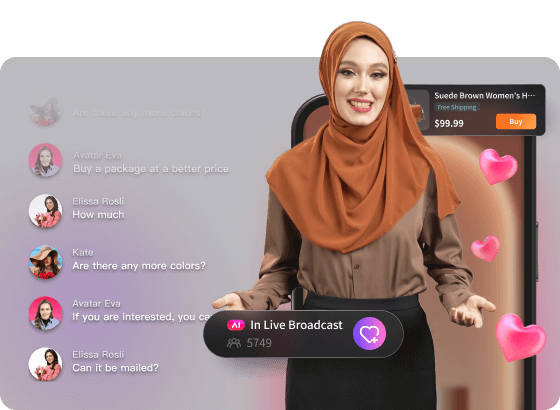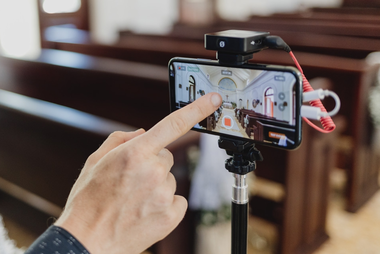Streaming technology has evolved significantly over the years, but one protocol still rules the world of smooth, high-quality live streams: RTMP live streaming. Once exclusive to Flash Player, Real-Time Messaging Protocol (RTMP) has adapted to support modern platforms, making it essential for content creators and businesses alike. This guide unpacks RTMP’s features, advantages, platforms, and setup processes, giving you all the knowledge you need to get started.
What Is RTMP?
RTMP, or Real-Time Messaging Protocol, is a streaming technology developed by Adobe. Originally, it powered Flash-based video streaming, allowing smooth and efficient data transfer between a video server and a user’s screen. Although Flash is now outdated, RTMP still provides stable, high-quality data transfer, keeping it relevant in modern streaming.
In technical terms, RTMP acts as a “middleman” between video and its destination, dividing the stream into small data packets that travel from the streaming server to various streaming platforms. This low-latency approach keeps video and audio tightly synchronized, allowing the user to enjoy uninterrupted streams.
Benefits of Using RTMP Streaming
RTMP offers a host of benefits that make it highly appealing for professionals and casual streamers alike:
- Low Latency: With RTMP, there’s minimal lag, meaning your audience receives the content almost as soon as you broadcast it. This real-time interaction is crucial for events like live sports, gaming, and concerts.
- High Quality: RTMP handles high-bitrate streaming smoothly, preserving video and audio quality. This is key for creators seeking to provide a premium viewing experience.
- Multi-platform Support: From YouTube and Twitch to Facebook, RTMP lets you stream to a wide array of platforms. Some streamers even use RTMP to simulcast across multiple platforms, extending reach and impact.
- Seamless Compatibility: Despite Flash’s decline, RTMP remains widely supported on various platforms, proving it’s still a durable and flexible streaming protocol.
These benefits make RTMP live streaming an ideal choice, especially for users who want reliable, responsive, and versatile streaming experiences.
How Does RTMP Streaming Work?
RTMP streaming works by breaking down video and audio data into small packets, each carrying essential information about the broadcast. The process starts with the publisher—the content source, such as a camera or streaming software configured to support RTMP. The publisher rapidly sends these data packets to an RTMP server, enabling smooth and near-instantaneous broadcasts.
Once received, the RTMP server acts as a central hub, processing and distributing the data packets while preserving their integrity. This ensures that video and audio stay perfectly in sync, so viewers experience the stream seamlessly, with no skips, mismatches, or out-of-sync issues. The server’s low-latency transfer also means that each packet reaches the audience almost as soon as it’s broadcast, which is vital for real-time interactivity and engagement.
Finally, the server relays the stream to the chosen platform, whether it’s YouTube, Facebook, or Twitch. On the viewer’s end, the platform reconstructs the packets, delivering a high-quality stream with minimal delay. RTMP’s low-latency and synchronized delivery make it ideal for live streaming, especially for content that demands precise timing, like sports, live events, and interactive gaming.
Which Platforms Support RTMP Live Streaming?
For streamers, one of RTMP’s biggest advantages is its wide compatibility across platforms. Most mainstream services like YouTube Live, Facebook Live, and Twitch support RTMP, allowing creators to reach broad audiences with minimal setup. Beyond these major platforms, RTMP is also embraced by specialized services. Vimeo and Dacast, for instance, cater to professional streamers, offering tools like custom branding, analytics, and password-protected streams, ideal for business webinars and exclusive events. Wowza is a go-to for broadcasters seeking reliable, adaptive bitrate streaming and content delivery across multiple devices, often used for large-scale events and global conferences. Even emerging platforms like Restream and BocaLive utilize RTMP to support multi-platform streaming, enabling creators to broadcast simultaneously to multiple destinations. Whether you’re aiming for niche communities or massive audiences, RTMP’s flexibility ensures high-quality, seamless streaming experiences across a range of platforms.
How to Set Up An RTMP Live Streaming?
Setting up an RTMP stream involves a few key considerations, such as selecting the destination platform and deciding on an encoder type. Software encoders like OBS Studio or BocaLive are popular choices for beginners, as they offer straightforward setup and customization options. For those opting for a hardware encoder, setup can be slightly more complex, but it provides additional reliability and processing power for professional-grade streams.
A crucial component in RTMP streaming is the RTMP stream key. This key acts as a secure code that links your encoder to the streaming platform. Along with the stream key, you’ll also need the server URL—a unique address that directs your stream to the correct platform. Both of these can typically be found within your platform’s broadcast settings. The server URL is often static, but the stream key may change with each new session.
When you’re ready to go live, simply enter the stream key and server URL into your encoder. This connection allows your video and audio data to flow smoothly from the encoder to the streaming platform, ensuring a stable RTMP stream for your audience. With the right configuration, RTMP streaming can be both reliable and flexible across platforms.
Set Up an RTMP Live Stream with BocaLive
If you’re looking for a seamless way to get started with RTMP, BocaLive offers a user-friendly setup. Here’s how to set it up:
Step 1. Download and Install BocaLive: Start by getting BocaLive’s latest version and launching it on your device.
Step 2. Retrieve RTMP Credentials: Open your streaming platform (like YouTube or Facebook) and copy the RTMP URL and Stream Key.
Step 3. Paste Credentials in BocaLive: Open BocaLive, find the RTMP settings, and paste your credentials.
Step 4. Adjust Stream Settings: BocaLive allows you to optimize video quality, bitrate, and frame rate for the best experience.
Step 5. Go Live: Click “Go Live,” and BocaLive will automatically link with your streaming platform, letting you broadcast your event in seconds.
Beyond basic streaming, BocaLive offers an array of AI-powered tools to take your broadcasts to the next level. You can create and customize an AI avatar that can run the show. This avatar can perform real-time interactions, capturing audience attention with lifelike responses and expressions, ensuring an engaging and professional presentation even when you’re not physically present. Here are some highlight features of BocaLive:

- AI Scripting: It automatically generates live scripts tailored to your content by simply pasting your product links or inputting key details.
- AI Real-Time Reply: The AI avatar can respond to viewer comments and questions instantly, creating a smooth and interactive experience for your audience.
- Multi-Streaming: You can broadcast across multiple platforms simultaneously. This capability maximizes your exposure and ensures you’re reaching viewers wherever they are.
With BocaLive’s comprehensive RTMP setup and advanced AI-driven tools, you’re fully equipped to produce dynamic, engaging, and high-impact live streams that stand out in the crowded digital space.
Conclusion
With the benefits of RTMP live streaming—from low latency and quality retention to wide platform compatibility—it’s easy to see why this protocol remains a favorite. By understanding RTMP, setting it up effectively, and choosing the right tools, you can maximize your streaming success. So go ahead, start broadcasting with tools like BocaLive, and enjoy the seamless streaming experience RTMP provides!





Recent Comments